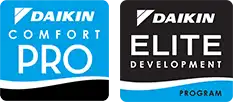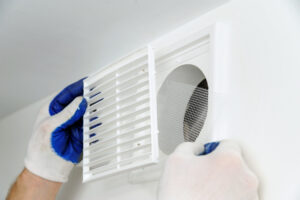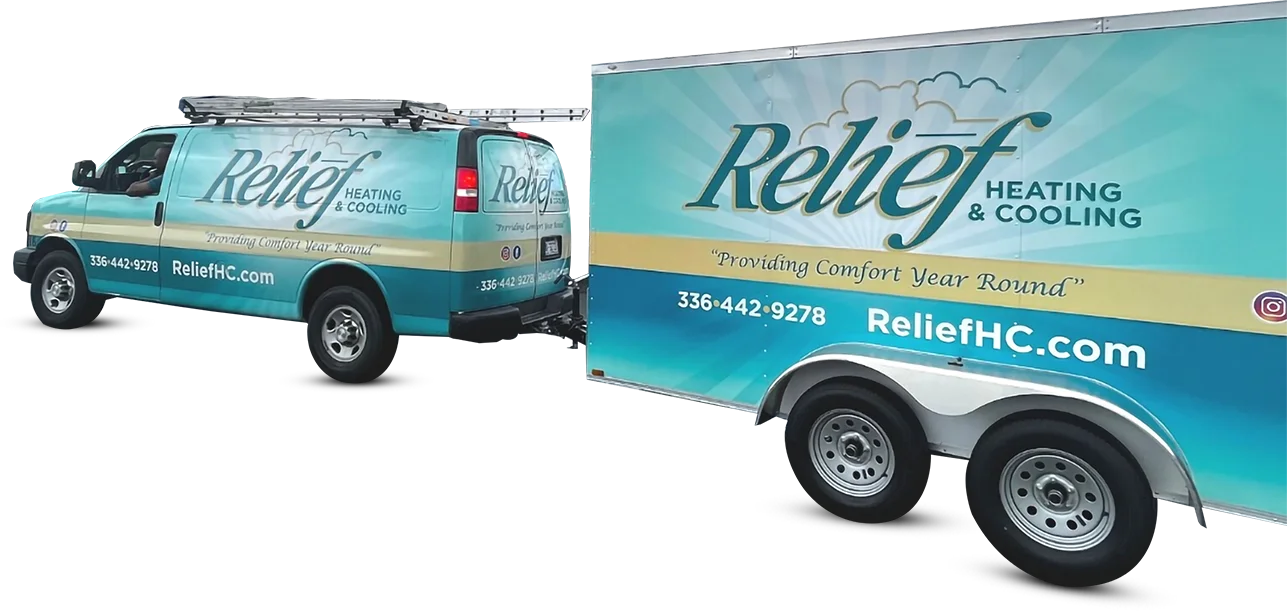Maintaining good indoor air quality is essential for a healthy and comfortable home environment. The air inside your house can easily become polluted with particles and gasses that affect both health and well-being. When these pollutants accumulate, they can cause discomfort and lead to health problems. Fortunately, understanding and addressing these issues can transform your indoor space into a much healthier environment.
In McLeansville, many residents face challenges in maintaining indoor air quality due to common pollutants found in homes. From dust and mold to chemicals and pet dander, these pollutants can be managed effectively with the right approach. This article focuses on identifying the top indoor air pollutants and provides useful tips on how to remove them, ensuring your home remains a safe haven for you and your family.
Understanding Indoor Air Pollutants
Indoor air pollutants are substances in the air that can have adverse effects on health and comfort. These pollutants come from a variety of sources and can be either particles or gases. Understanding what these are and how they impact your health is key to addressing the problem effectively.
Common indoor air pollutants in homes include:
– Dust and Dust Mites: Tiny particles that accumulate in homes and can worsen allergies and respiratory conditions.
– Mold and Mildew: Form in damp areas and can lead to breathing problems and allergic reactions.
– Pet Dander: Microscopic flecks of skin shed by pets, which can trigger allergies.
– Pollen: Often enters homes through windows and doors, affecting those with seasonal allergies.
– Volatile Organic Compounds (VOCs): Released from household products like paint, cleaning supplies, and furnishings, posing long-term health risks.
– Tobacco Smoke: Contains harmful chemicals that degrade indoor air quality and health.
– Carbon Monoxide and Other Gases: Emitted from household appliances and can be dangerous in high concentrations.
HVAC systems play a vital role in regulating and improving indoor air quality. They help circulate and filter air, reducing the presence of these pollutants when properly maintained. By understanding the various indoor air pollutants and their effects, you can take effective measures to improve the air you breathe within your home.
Top 7 Indoor Air Pollutants
1. Dust and Dust Mites
Dust and dust mites are common indoor pollutants that can accumulate on surfaces, furniture, and in carpets. These tiny particles can exacerbate allergies and cause respiratory difficulties. Regular cleaning and the use of protective covers on mattresses and pillows can help reduce their presence.
2. Mold and Mildew
Mold and mildew grow in damp areas, such as bathrooms and basements. They release spores into the air, which can lead to respiratory issues and allergic reactions. To prevent mold growth, maintain low humidity levels and fix any leaks promptly.
3. Pet Dander
Pet dander consists of tiny, even microscopic, flecks of skin shed by animals with fur or feathers. This can trigger allergies in sensitive individuals. Regular grooming and cleaning can help manage pet dander in your home.
4. Pollen
Pollen is a fine powder produced by plants as part of their reproductive cycle. This allergen can cause significant discomfort to those with allergies when it enters the home through open windows and doors. To minimize pollen intrusion, it’s effective to keep windows closed during high pollen seasons and use air filters designed to trap pollen particles. Regularly cleaning HVAC filters and installing screens can also reduce the amount of pollen that finds its way indoors.
5. Volatile Organic Compounds (VOCs)
VOCs are chemicals that easily evaporate at room temperature and are found in many household items, such as paints, cleaning supplies, and varnishes. These compounds can release harmful chemicals into the air, leading to health issues. To reduce VOC levels, use products labeled as low-VOC or VOC-free whenever possible. Proper ventilation, like exhaust fans or open windows, helps to dissipate VOCs after using these products.
6. Tobacco Smoke
Tobacco smoke is another major indoor air pollutant. It contains a mixture of harmful chemicals that degrade air quality and pose serious health risks to residents. To safeguard indoor air, smoking should be prohibited indoors. For homes with a history of indoor smoking, thorough cleaning of surfaces and using air purifiers can help remove lingering residues.
7. Carbon Monoxide and Other Gases
Carbon monoxide (CO) is a colorless, odorless gas produced by burning fuels in stoves, fireplaces, and other appliances. High levels can be dangerous, making it critical to have CO detectors installed in homes. Routine maintenance of heating systems and regular checks of gas appliances help prevent leaks. Adequate ventilation is also necessary to ensure harmful gases are effectively expelled from the home.
Effective Ways to Remove Indoor Air Pollutants
Routine Cleaning and Dusting
Consistency is key when it comes to reducing indoor air pollutants. Regular vacuuming with a HEPA filter, dusting surfaces, and washing bedding in hot water can significantly cut down on dust mites and pet dander. It’s a simple step that provides a big payoff in terms of improved air quality.
Mold and Mildew Prevention
Preventing the growth of mold and mildew involves controlling moisture. Dehumidifiers can help maintain optimal humidity levels, especially in basements and bathrooms. Be vigilant about fixing any leaks or water damage promptly to prevent a breeding ground for mold.
Using Air Purifiers and Ventilation
Air purifiers equipped with HEPA filters can capture a variety of pollutants, from pollen to pet dander. For an effective system, choose purifiers that cover the appropriate square footage of your living space. Additionally, good ventilation, like kitchen and bathroom exhaust fans, helps draw out pollutants, enhancing overall air quality.
Regular HVAC Maintenance
HVAC systems are crucial for maintaining clean indoor air. Regular maintenance keeps them running efficiently and effectively filtering air. Schedule inspections to ensure air ducts and vents are clean and free of obstructions. Clean HVAC filters regularly or replace them as advised to sustain peak performance.
Professional Solutions for Better Air Quality
The Benefits of Hiring Professional Services
Professional services provide a comprehensive approach to managing indoor air quality. Our professionals have the tools and expertise to identify and mitigate various air quality issues more effectively than many at-home methods.
How Our Professionals Can Help
Our technicians offer specialized services tailored to improve indoor air conditions, from detailed duct cleaning to advanced air purification installations. This ensures pollutants are not just managed, but significantly reduced, offering long-term benefits.
Encouraging Regular Assessments
Regular assessments by professionals help sustain a high standard of air quality in your home. They detect and resolve emerging issues, ensuring that air quality remains optimized year-round.
Ensuring a Healthy Home Environment
Creating a clean and safe indoor environment is an investment in the health and comfort of your loved ones. By addressing common air pollutants, employing practical solutions, and utilizing professional services, you can significantly enhance the air quality within your home in McLeansville. Cleaner air leads to fewer health complications and a more pleasant living space for everyone involved.
Taking these actions doesn’t just improve day-to-day comfort. It contributes to long-term well-being by reducing exposure to harmful pollutants. Every effort you make toward cleaner indoor air is a step toward a healthier, happier home.
For reliable service that keeps your indoor air clean and healthy, learn more about our HVAC company in McLeansville by exploring our professional services and experienced approach. When you are ready for a quick estimate or to book a service visit, please contact us today.






